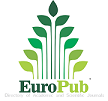In the pixel jungle
forms of classification and social dynamics around images generated by artificial intelligence
Visualizações: 409DOI:
https://doi.org/10.20336/rbs.1015Keywords:
digital platforms, artificial intelligence, images, glitchAbstract
This article is based on research carried out through online observation and manual compilation of comments and images to analyze the social dynamics within a group dedicated to share images created by generative artificial intelligence. We focus mainly on a category of images designated by group members as Found in the wild: AI-generated images found by chance on the Internet, in an original context of use in which they appear to be “real” images, not produced by artificial intelligence. We analyzed the images shared in the group and their comments to discuss how group members decide whether or not an image is the product of generative AI. These images, often the subject of debate, highlight the ability of individuals to discern their artificial origin, or lack of it, and the types of knowledge mobilized in this process.
Downloads
References
Bahrini, Aram et al. (2023, 27-28 abr.). ChatGPT: Applications, opportunities, and threats [Artigo apresentado em simpósio]. IEEE – Systems and Information Engineering Design Symposium, Charlottesville, VA, EUA. https://doi.org/10.48550/arXiv.2304.09103
Bardin, Laurence. (1977). L’analyse de contenu. PUF.
Barthes, Roland. (1980). La chambre claire : Note sur la photographie. Gallimard.
Benjamin, Walter. (2013). La théorie de la ressemblance. In P. Lavelle (org.), Walter Benjamin (pp. 120-122). L’Herne.
Bommasani, Rishi et al. (2021). On the opportunities and risks of foundation models. arXiv, arXiv:2108.07258. https://doi.org/10.48550/arXiv.2108.07258
Borji, Ali. (2023). Qualitative failures of image generation models and their application in detecting deepfakes. Image and Vision Computing, 137. https://doi.org/10.1016/j.imavis.2023.104771
Braşoveanu, Adrian M., & Andonie, Rǎzvan. (2020, 7-11 set.). Visualizing transformers for NLP: A brief survey [Artigo apresentado em congresso]. 24th International Conference Information Visualisation (IV), Melbourne. https://doi.ieeecomputersociety.org/10.1109/IV51561.2020.00051
Geertz, Clifford. (1989). A interpretação das culturas. LTC.
Ginzburg, Carlo. (1989). Mitos, emblemas, sinais: morfologia e história. Companhia das Letras.
Dika, Khaled. (2020). L’affaire Loomis : les fantômes de Descartes et de Grotius à l’assaut de la justice ? Archives ouvertes HAL, preprint, hal-02566382. https://hal.science/hal-02566382
Farid, Hany. (2009). Photo fakery and forensics. In M. Zelkowitz (ed.), Advances in Computers (Vol. 77, pp.1-55). https://doi.org/10.1016/S0065-2458(09)01201-7
Ferrer, Josep. (2024). How transformers work: A detailed exploration of transformer architecture. Datacamp. https://www.datacamp.com/tutorial/how-transformers-work
Ferrara, Emilio. (2024). GenAI against humanity: Nefarious applications of generative artificial intelligence and large language models. Journal of Computational Social Science, 7, 549-569. https://doi.org/10.1007/s42001-024-00250-1
Gombrich, Ernst Hans. (2000). Art and illusion: A study in the psychology of pictorial representation. Princeton University Press.
Harwell, Drew. (2022). He used AI to win a fine-arts competition. Was it cheating? The Washington Post. https://www.washingtonpost.com/technology/2022/09/02/midjourney-artificial-intelligence-state-fair-colorado/
Ingold, Timothy. (2010). Da transmissão de representações à educação da atenção. Educação, 33(1), 6-25.
Lamri, Jeremy, Tertrais, Gaspard, & Silver, Aurora. (2023). Travailler à l'ère des IA génératives. EMS Editions.
Lin, Li et al. (2024). Detecting multimedia generated by large ai models: A survey. arXiv, preprint, arXiv:2402.00045. https://doi.org/10.48550/arXiv.2402.00045
Machado, Arlindo. (1998). A fotografia sob o impacto da eletrônica. In E. Samain (org), O fotográfico (pp. 317-326). Hucitec-CNPq.
Martins, José de S. (2009). Sociologia da fotografia e da imagem. Contexto.
Menezes, Paulo. (2003). Representificação: as relações (im)possíveis entre cinema documental e conhecimento. Revista Brasileira de Ciências Sociais, 18(51), 87-97. https://doi.org/10.1590/S0102-69092003000100007
Meunier, Alex, Ricci, Donato, Cardon, Dominique, & Crépel, Maxime. (2019). Les glitchs, ces moments où les algorithmes tremblent. Techniques & Culture, (72), 200-203.
Nightingale, Sophie J., & Farid, Hany. (2022). AI-synthesized faces are indistinguishable from real faces and more trustworthy. Proceedings of the National Academy of Sciences, 119(8), e2120481119. https://doi.org/10.1073/pnas.2120481119
Oppenlaender, Jonas. (2023). A taxonomy of prompt modifiers for text-to-image generation. Behaviour & Information Technology, 1–14. https://doi.org/10.1080/0144929X.2023.2286532
Paillé, Pierre, & Mucchielli, Alex. (2021). L’analyse qualitative en sciences humaines et sociales. Armand Colin.
Porcile, Gonzalo, Gindi, Jack, Mundra, Shivansh, Verbus, James R., & Farid, Hany. (2024). Finding AI-generated faces in the wild. arXiv, arXiv:2311.08577. https://arxiv.org/abs/2311.08577
Radio-Canada. (2023, 6 set.). IA : la fausse chanson de Drake et The Weeknd tente sa chance pour les Grammy. Radio-Canada. https://ici.radio-canada.ca/nouvelle/2008492/heart-on-my-sleeve-drake-the-weeknd-ghostwriter-intelligence-artificielle-prix-grammy
Santaella, Lucia. (1998). Os três paradigmas da imagem In E. Samain (org), O fotográfico (pp. 303-316). Hucitec-CNPq.
Segalen, Victor. (1995). Essai sur l’exotisme, une esthétique du divers. Bibliothèque artistique et littéraire.
Sontag, Susan. (1973). On photography. RosettaBooks.
Steinfeld, Kyle. (2023). Clever little tricks: A socio-technical history of text-to-image generative models. International Journal of Architectural Computing, 21(2), 211-241. https://doi.org/10.1177/14780771231168230
Suresh, Harini, & Guttag, John. (2021, out.). A framework for understanding sources of harm throughout the machine learning life cycle [Artigo apresentado em congresso]. ACM Conference on Equity and Access in Algorithms, Mechanisms, and Optimization, Nova York. https://doi.org/10.1145/3465416.3483305
Tsing, Anna, Deger, Jennifer, Saxena, Alder K., & Zhou, Feifei. (2020). Feral Atlas. The More-than-Human Anthropocene. Stanford University Press. https://feralatlas.org/
Wang, Tricia. (2013, 13 maio). Big data needs thick data. Ethnography Matters. disponível em http://ethnographymatters.net/blog/2013/05/13/big-data-needs-thickdata/
Weidinger, Laura et al. (2022, 21-24 jun.). Taxonomy of risks posed by language models [Artigo apresentado em congress]. ACM Conference on Fairness, Accountability, and Transparency, Seul. https://doi.org/10.1145/3531146.3533088
Wenger, Etienne. (2010). Communities of practice and social learning systems: The career of a concept. In C. Blackmore (org.), Social learning systems and communities of practice (pp. 179-198). Londres: Springer.
Downloads
Published
How to Cite
Issue
Section
License
Copyright (c) 2024 Debora Krischke Leitao, Daniella Landrys

This work is licensed under a Creative Commons Attribution 4.0 International License.
All content of the journal, except where identified, is licensed under a Creative Commons attribution-type 4.0 International














